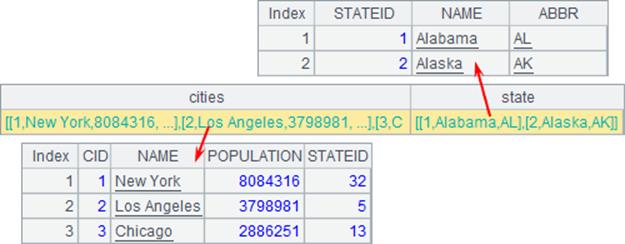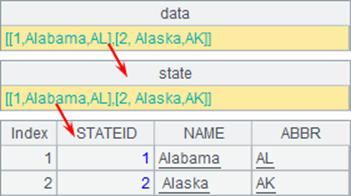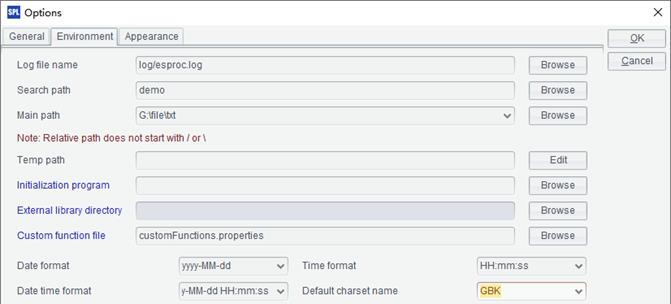XML data
The XML format is suitable to store tree-structured data. It is thus usually used to store configuration files. The format can also store data in string format.
Let’s look at how to use XML data as the data source through a simple example:
|
|
A |
|
1 |
=file("data.xml") |
|
2 |
=xml(A1.read()) |
|
3 |
=xml(A1.read(), "data") |
A1 reads string data from the data.xml file. Below is the file:
<?xml version="1.0" encoding="ISO-8859-13"?>
<data>
<cities>
<CID>1</CID>
<NAME>"New York"</NAME>
<POPULATION>8084316</POPULATION>
<STATEID>32</STATEID>
</cities>
<cities>
<CID>2</CID>
<NAME>"Los Angeles"</NAME>
<POPULATION>3798981</POPULATION>
<STATEID>5</STATEID>
</cities>
<cities>
<CID>3</CID>
<NAME>"Chicago"</NAME>
<POPULATION>2886251</POPULATION>
<STATEID>13</STATEID>
</cities>
<state>
<STATEID>1</STATEID>
<NAME>"Alabama"</NAME>
<ABBR>"AL"</ABBR>
</state>
<state>
<STATEID>2</STATEID>
<NAME>"Alaska"</NAME>
<ABBR>"AK"</ABBR>
</state>
</data>
The xml defines the highest level node data and stores data of two tables: cities and state. The node name for each record is the table name, under which fields and corresponding values are listed. A2 reads a string from the file using the read function and imports it with the xml() function:

The XML string will be parsed as one record. Double click each field to see the detailed data:

cities and state are interpred as the two fields of the record.
You can specify the node to be read in the xml() function, as shown in A3. Here’s A4’s result:

The XML format supports using various ways to define the value of a node. For example:
<?xml version="1.0" encoding="ISO-8859-13"?>
<data>
<state>
<STATEID NAME="Alabama" ABBR="AL">1</STATEID>
<STATEID NAME=" Alaska" ABBR="AK">2</STATEID>
</state>
</data>
We use the xml@s() function to read this type of XML data:
|
|
A |
|
1 |
file("data2.xml") |
|
2 |
=xml@s(A1.read()) |
Here’s A2’s result:

If the XML data contains special characters, such as Chinese characters, data retrieval result may be affected by the encoding format. By default, file(fn) uses the encoding type specified by esProc to retrieve the XML data:

Messy code will appear if XML data and the function uses different type of encoding. To avoid this, we need to specify the encoding type in file() function. In the preceding code, for example, we can modify A1’s code to =file("data2.xml":"ISO-8859-13").